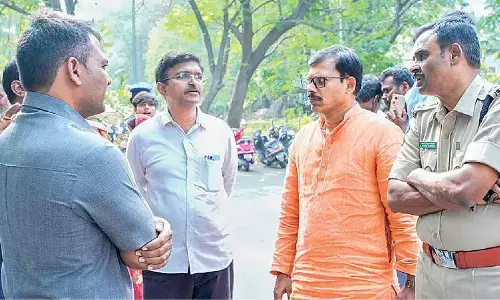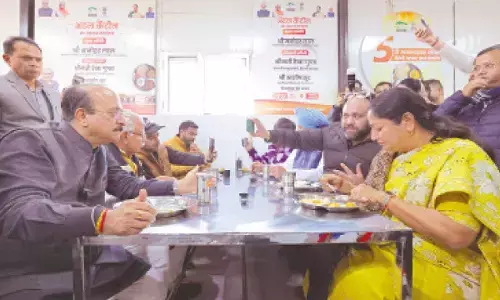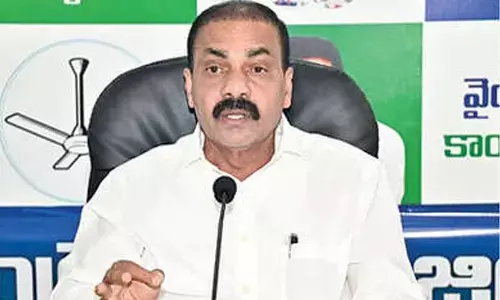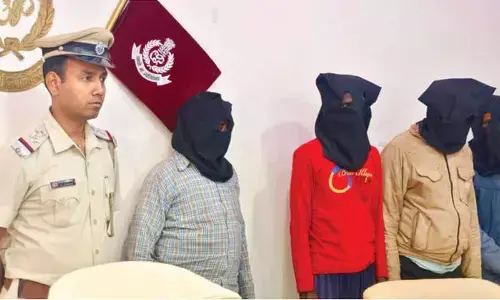According priority to disaster management
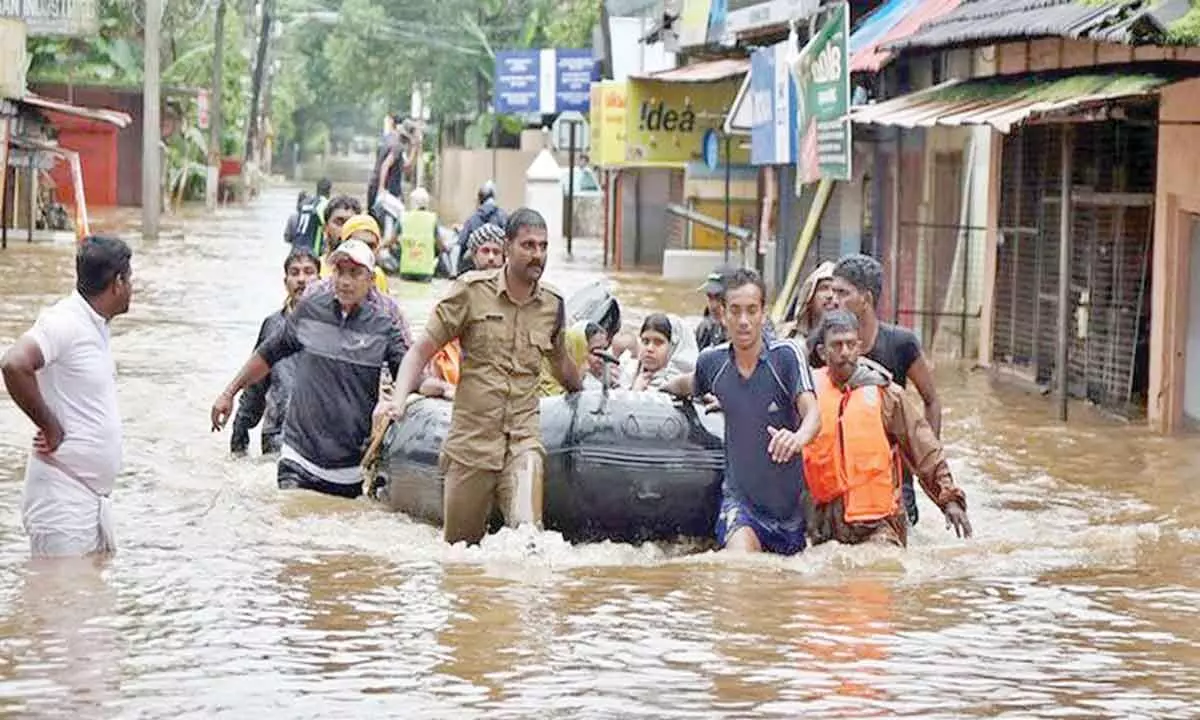
There is this popular folk song, in America, with the refrain "when will they ever learn".
There is this popular folk song, in America, with the refrain "when will they ever learn". I can think of no more apt a line to describe the attitude, of the central and state governments today, towards the subject of Disaster Management (DM). I, have taken the readers of this column, earlier, for a long enough walk along the beaten track of DM in this country. So I shall endeavour not to repeat myself.
The current situation in the country caused by heavy rains and floods compelled me to choose this topic this week. Several parts of the country, including the usual players in the flood scene at this time of the year, such as Assam, Tripura, Uttaranchal, Gujarat, Maharashtra and Telangana, have been ravaged by heavy rains and floods over the past few weeks.
264 districts of 19 states/UTs have been flood affected, and, on account of either heavy rainfall, floods, lightning or landslides, more than 1000 people have lost their lives and close to a 100 persons are reported to be missing. Damage to housing and agriculture has also been extensive. Floods are neither a strange nor an unusual phenomenon, and occur with predictable regularity year after year. In their wake, they leave a trail of destruction, and cause heavy losses to life and property. Precious gains of years of development effort are literally washed away, in the matter of a few days.
In Telangana state, where I live, the impact has been extensive and severe. The Chief Minister has called for the preparation of a master plan, in consultation with the best experts in the field, to prevent recurrence of the suffering caused. Of particular significance is his announcement of a massive permanent housing programme in Bhadrachalam and Pinapaka divisions of Bhadradri Kothagudem district. Other states have also taken several steps to mitigate the suffering of the victims, calling upon the Indian Army and the National Disaster Response Force (NDRF)
As a former Member of the National Disaster Management Authority (NDMA), I regret to have to count as NDRF probably the one and only one significant outcome of the constitution of NDMA and authorities at the state and district levels, through the enactment of the DM Act in 2005.
Floods are caused by various reasons such as silting of rivers, river bank erosion, heavy rains, etc. What textbooks fail to mention is that carelessness on the part of political leaders, and indifference by the bureaucracy, are probably the most important cause.
Neither in the metropolitan cities of Bombay and Chennai, nor in the habitually flood affected states which include Uttarakhand, Uttar Pradesh, Telangana and Assam, is there any substantial evidence of concrete steps being taken on the recommendations of the Committees appointed in past in the wake of disasters.
If what happened in Chennai, in 2015, was a narrative of excessive centralisation of authority and poor communication, the story of Bombay, in 2005, was one of the absence of lines of control and chains of command, as well as coordinated activity and clear leadership. Studied indifference is the only way of describing the response of the governments to the needs of the future. The all-important area of DM would still appear to be sitting on the bench waiting to join the main players in the field.
It was in the year 1975 that a draft of a Flood Plane Zoning Regulation was circulated by the government of India to all states with the request to enact appropriate statutes to make flood management effective as floods are a state subject the dispensation contained in the Indian constitution.
Nearly half a century down the line, it is, indeed, dismaying to note that the only states to respond to that request are Manipur, Rajasthan, Jammu and Kashmir and Uttarakhand. In recent times, barely weeks ago, a Step-by-Step Guide was prepared for all the states for action to be taken before, during and after disasters, following a directive by the government of India to the National Institute of Disaster Management (NIDM) which pressed into service a team for the purpose, which I had the privilege of leading. There are, in addition, the guidelines of the NDMA on floods, as also on the Incident Response System, to be followed in the wake of the occurrence of any disaster.
A weak area is the absence of a Flood Risk Analysis, of the various states in the country, prepared using state-of-the-art methodology and prepared by well-known experts in the field. This will need to be a national effort and a part of the Ministry of Jal Shakti through the Central Water Commission (CWC).
Coordination between the Ministry, CWC and NDMA will be required, and the analysis will need to be based on the guidelines of the NDMA on the management of floods and also the DM plans of the states concerned. In addition CWC needs to be commissioned to undertake a National Flood Hazard Mapping with the National Remote Sensing Centre and the State Remote Sensing Application Centres, should join the effort. As several rivers are trans-boundary, and flow across states, this effort is best coordinated at the national level and by a government agency.
What appears necessary, at this stage, is not so much new plans of action but the determination required to enforce those already in place. Clearly this will mean that the central and state governments will have to revisit the options at their disposal and the priority in which they will address them, according to the subject of DM the priority deserves.
The need of the hour is to build a culture of preparedness and mitigation across all sections of society and wings of government. A holistic, inclusive, technology driven and coordinated effort needs to be mounted if such a situation is not to come to pass in the future. Building of capacity in all the actors, such as the departments of the government, and the related agencies, at the national and state levels, the corporate sector, the civil society organisations to participate effectively in the process of DM, is central to the whole process. The paradigm shift, advocated by NDMA nearly 15 years ago, needs to be made an integral part of the states; DM approach. Emphasis, by and large, continues on post equivalent activities, even today.
A little diversion to end this rather serious article on a light hearted note. Soon after we joined the NDMA members had an issue to resolve, namely, what to call events such as a flood, cyclone or earthquake etc., I shared with my colleagues a story, probably apocryphal, I had heard about a discussion in British Parliament.
The question was what the difference was between calamity and a catastrophe. Edmund Burke the Leader of the Opposition, is said to have told George Grenville, the Prime Minister, "Prime Minister, if you were to drown, it would be a calamity, but, if someone were to save you, it would be a catastrophe!"
(The writer is former Chief Secretary, Government of Andhra Pradesh) (The opinions expressed in this column are that of the writer. The facts and opinions expressed here do not reflect the views of The Hans India)










